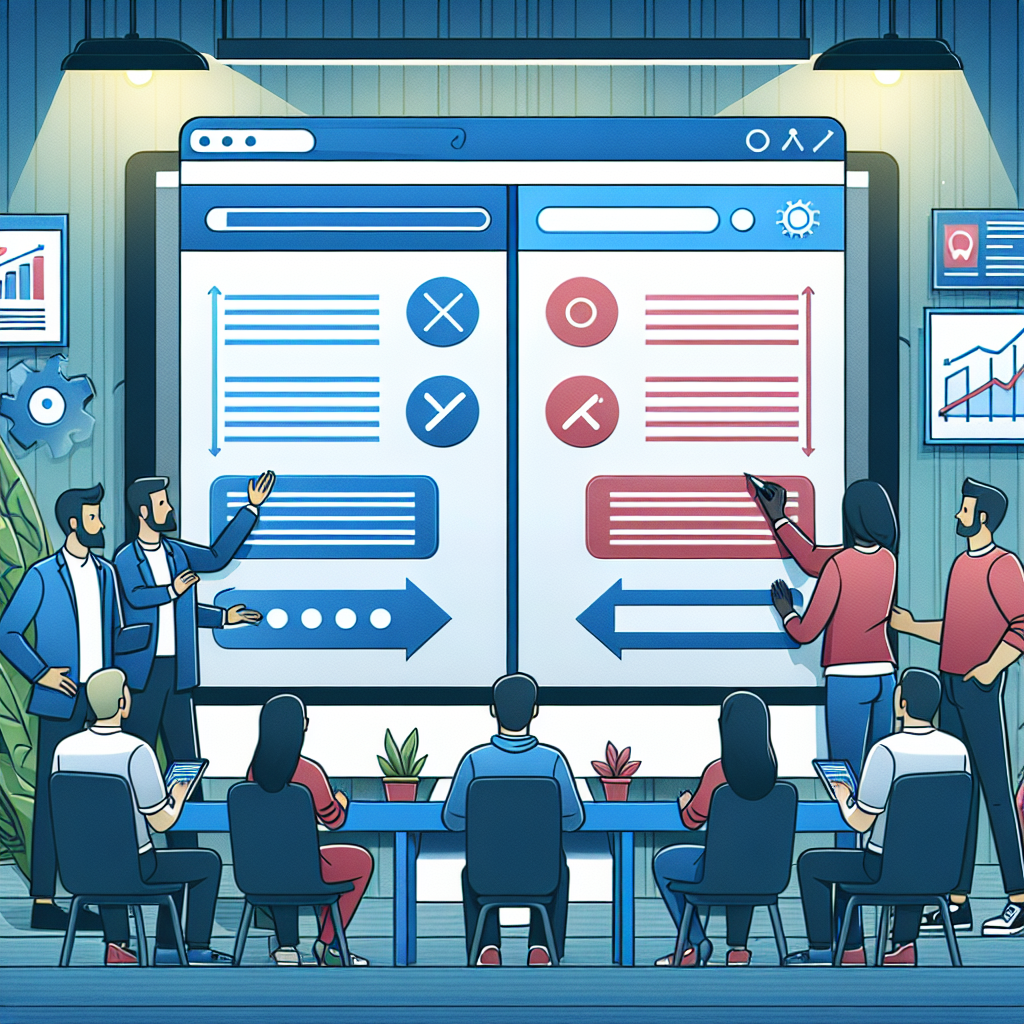Explore Essential Elements, Types, and Functions of Landing Pages

What is the Purpose of a Landing Page and How Does It Solve Specific Marketing Tasks?
 Did you know that a well-crafted landing page can boost conversion rates significantly? In fact, studies show that optimized landing pages can achieve conversion rates of up to 20-30% while typical web pages hover around 2-3%. So, what is the purpose of a landing page? ⭐
A landing page serves as a focused entry point for potential customers. Unlike a full website that provides a broad overview of your business, a landing page targets specific marketing tasks and encourages visitors to take action—whether that’s filling out a form, signing up for a newsletter, or making a purchase.
Did you know that a well-crafted landing page can boost conversion rates significantly? In fact, studies show that optimized landing pages can achieve conversion rates of up to 20-30% while typical web pages hover around 2-3%. So, what is the purpose of a landing page? ⭐
A landing page serves as a focused entry point for potential customers. Unlike a full website that provides a broad overview of your business, a landing page targets specific marketing tasks and encourages visitors to take action—whether that’s filling out a form, signing up for a newsletter, or making a purchase. Problem Solving Through Landing Pages Imagine you are launching a new product. You run an ad campaign directing users to a dedicated landing page that highlights the products features, benefits, and a limited-time offer. The message is clear: Take action now! This page solves the specific marketing task of converting traffic into potential customers. But, how does it do that?
# An Example in Action Let’s say you run a fitness center. You create a landing page for a three-month membership trial at a discounted rate. By highlighting success stories, motivated visuals of the gym environment, and a countdown timer for the offer, you not only attract attention but also provide a sense of urgency. Here’s another scenario: A local bakery wants customers to sign up for their cake decorating classes. By showcasing testimonials from previous students, offering a sneak peek of a class, and providing easy online registration, the bakerys landing page effectively converts casual visitors into engaged customers.
| Section | Purpose |
| Headline | Grab attention quickly. |
| Subheadline | Provide a value proposition. |
| Visuals | Enhance engagement. |
| Body Copy | Detail benefits and features. |
| Testimonials | Build trust and credibility. |
| Call to Action | Encourage immediate action. |
| Form | Gather user information. |
| Legal | Compliance and trust factors. |
| Footer | Navigation options & contact info. |
# Why Invest in Landing Pages? Now you might wonder, what is needed to create a landing page? The magic lies in a mix of strategy, design, and analysis. Professional tools, experienced developers, and a clear understanding of your audience play pivotal roles. At nexrilo.com, we have over 20 years of experience and a team of specialists ready to create tailored landing pages that convert. Contact us at [email protected] or visit our website to get started. Ultimately, the purpose of a landing page goes beyond just serving as a digital brochure. It efficiently funnels potential customers through a tailored experience that addresses their needs and encourages them to act. So, why not turn your web traffic into loyal customers today? ⭐
Frequently Asked Questions 1. What is the purpose of a landing page? - A landing page is designed to convert visitors into leads or sales by providing focused content and a clear call-to-action. 2. What is the difference between a landing page and a website? - A landing page has a single goal—converting visitors—while a website provides more information about a business and often includes multiple pages. 3. What is needed to create a landing page? - You need a clear message, compelling visuals, a strong call-to-action, and a user-friendly design. 4. What is important in a landing page? - Key elements include a strong headline, relevant content, visuals, testimonials, and a clear path to conversion. 5. What types of landing pages are there? - Types include lead capture landing pages, click-through landing pages, and sales landing pages. 6. What should a landing page be like? - It should be simple, focused, visually appealing, and targeted to the specific audience. 7. What tasks does a landing page solve? - It drives conversions, capture leads, and improves marketing campaign effectiveness. 8. What blocks does a landing page consist of? - It typically consists of a headline, sub-headline, visuals, body copy, testimonials, and a call-to-action. 9. How long does it take to make a landing page? - It can take anywhere from a few days to a few weeks depending on complexity and requirements. 10. How much does it cost to make a landing page? - The cost varies based on design complexity, with typical prices ranging from 400 to 1560 euros. Dont wait any longer! Take the first step towards transforming your online presence with a professional landing page. Contact us now! ⭐⭐
What is the Difference Between a Landing Page and a Website That Businesses Must Know?

The Core Purpose ⭐ A website is like a digital storefront, showcasing everything your business has to offer—from services and products to company history and blogs. It provides visitors with multiple points of information and navigation options to explore. On the other hand, a landing page is laser-focused. It’s created for a specific marketing campaign with a single goal: conversion. Whether it’s capturing leads, promoting a special offer, or driving traffic to a specific product, a landing page channels visitors attention to one specific action, which is typically a call-to-action (CTA). In fact, studies show that landing pages can lead to conversion rates up to 30%, while general website pages sit around 2–3%.
Structure and Content ⭐️ Here’s where the major differences really start to stand out. - Website: - Multi-Page Structure: Your business website generally consists of various pages (home, about, services, contact, blog, etc.) designed to provide comprehensive information. - Broad Navigation: Users can easily gather info on various aspects of your business. This is great for building brand awareness but can dilute focus on conversions. - Diverse Content: A website caters to users at different stages of the buying journey: awareness, consideration, and decision-making. - Landing Page: - Singular Focus: A landing page usually contains minimal distractions—a headline, body content, visuals, and a specific CTA. - Tailored Content: The content is laser-focused on a single offer relevant to a particular audience or dealing with specific pain points. - No Navigation Bar: By omitting navigation bars, users stay concentrated on the call to action without wandering off.
User Experience and Goals ✨ Understanding the user experience is vital for both types of pages. - Website Goals: - Inform and Educate: The primary aim is to educate users about the business, its offerings, and how they can benefit. - Building Relationships: A website aims to create a rapport with visitors to gain trust and loyalty over time. - Landing Page Goals: - Drive Action: Conversions are the focus here. You want users to fill out a form, sign up for a newsletter, or make a purchase. - Measure Effectiveness: By focusing on specific metrics, you can gauge the success of marketing campaigns more efficiently.
Example Scenarios ⭐ Let’s look at a real-world example to clarify these differences further. Imagine you are a software company launching a new product. Your comprehensive website provides access to all sorts of information about your services, past projects, team profiles, and more. However, when it comes time to launch your new product, you create a landing page specifically for that launch. This landing page features a captivating product description, a video demo, testimonials from beta testers, and an enticing limited-time discount. Your website directs traffic to this page, which is designed solely to get users to purchase the new product immediately.
Why It Matters to Your Business ⭐ Knowing the difference between a landing page and a full website can significantly impact your marketing effectiveness: - Effective Campaigns: Being strategic with your campaigns means using landing pages for targeted promotions while still having your website available for a broader audience. - Cost-Effective Resources: With only essential elements on a landing page, you can efficiently allocate resources to maximize conversions for specific campaigns. - Enhanced Analytics: Isolating traffic to a landing page allows for precise analysis of what converts well without interference from other content on your website. ⭐ As you design your advertising and marketing strategies, consider how both landing pages and websites can work together harmoniously. Combine informative website content with sharp, conversion-focused landing pages to achieve your marketing goals. Our team at nexrilo.com, with over 20 years of expertise, can help you craft both an is-informed website and high-converting landing pages tailored to your specific needs. Want to know more? Reach out today at [email protected] or visit our website. Start converting traffic into loyal customers! ⭐
Let’s Talk About Your Next Project
Fill out the form below and our team will reach out within one business day
